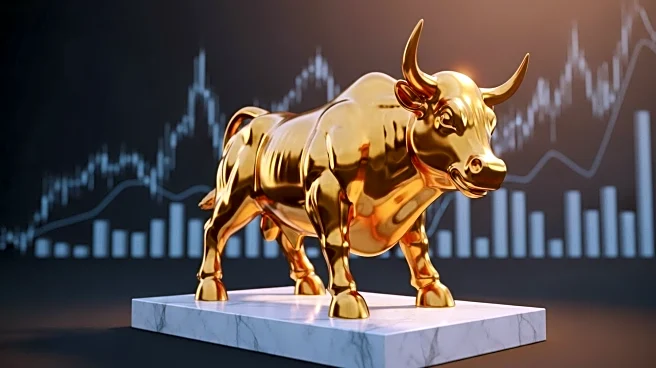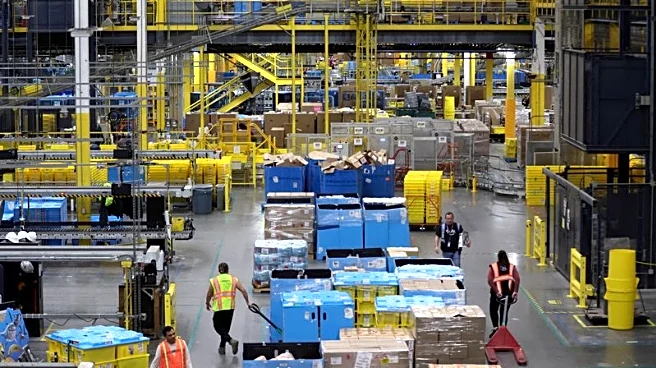What's Happening?
Gold prices have reached an unprecedented high, surpassing $4,000 for the first time. This surge comes as the U.S. government experiences a partial shutdown and the dollar weakens. Gold futures briefly exceeded $4,006 before stabilizing. The commodity's value has increased by 50% this year, driven by inflation concerns and a declining dollar. Investors are turning to gold as a hedge against inflation, with retail and institutional buyers increasing their holdings. The demand for gold has led to shortages at major retailers like Costco and Walmart, where gold bars have quickly sold out.
Why It's Important?
The rise in gold prices reflects broader economic uncertainties, including inflation and currency devaluation. As a traditional safe-haven asset, gold's appeal grows during times of financial instability. The current economic environment, marked by a government shutdown and geopolitical tensions, has heightened investor anxiety, prompting a shift towards gold. This trend underscores the challenges faced by policymakers in stabilizing the economy and managing inflation. The increased demand for gold also highlights the limitations of fiat currencies in maintaining purchasing power during economic downturns.
What's Next?
If economic uncertainties persist, gold prices may continue to rise, further straining supply chains and retail availability. Investors might increasingly diversify their portfolios with gold, potentially influencing market dynamics. Policymakers may need to address underlying economic issues, such as inflation and fiscal policy, to restore confidence in traditional financial systems. Additionally, the ongoing government shutdown could exacerbate economic instability, prompting further shifts in investment strategies.












